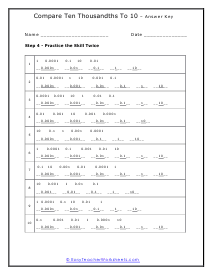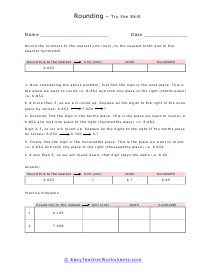A decimal form of a number is a way of articulating the values in the scale of tens. The decimal point is used to signify that this is form of notation we are using. This point separates the whole integer part from the fraction part of the number. A great way to show children this is with a hundreds chart. Hundreds charts are a blank series of squares created by ten empty rows and columns, some what similar to a piece of graph paper. As a result of ten rows and ten columns, you have one hundred empty boxes. Each box is worth one one-hundredth. Fill up twenty boxes and you have twenty one-hundredths or 0.2 in decimal form. It is also helpful to first cover place value and understand the significance of each position to the left and right of the decimal point.
Decimals are the core fundamental of all financial markets. All decimals have dots, sometimes called periods, the dot or period indicates a place value that is less than the ones place. In the case of money, a decimal point indicates the cents. The decimal point separates numbers that are less than one from numbers that are smaller. Anything to the left of decimal is more than one and anything to the right of the decimal place is a value that is less than one.
Decimals are parts of a whole. For instance 0.74 is 74ths of a whole or 7 tenths and 4 hundredths of one. In the case of money that would be equal to 74 cents. The decimal worksheets cover just about everything you do with decimal math. We start with identify place value, move on to operations and even show you how these make their way to algebra. We would suggest you spend a good amount of time with the operations portion of these topics before you run on to the algebraic aspects.
























